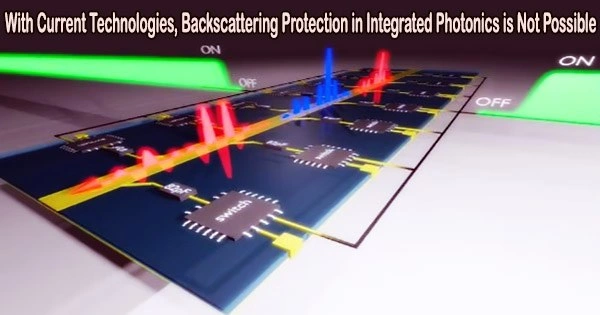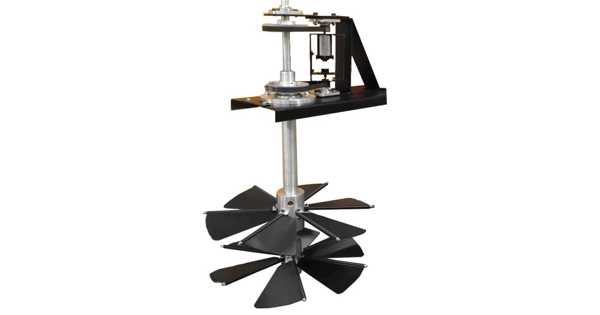Backscattering protection refers to the measures taken to minimize or prevent the negative effects of backscattering in various fields, including physics, telecommunications, and medical imaging. The field of integrated photonics has taken off in recent years. The circuitry of these microchips is made up of light particles (photons), as opposed to the electronic circuits that, in many respects, are the foundation of our modern world.
Integrated photonics has enormous potential and is quickly entering the infrastructure of data centers and telecom systems. It also holds great promise for a variety of sensors and integrated quantum technologies. It offers improved performance, reliability, energy efficiency, and novel functionalities.
Defects may never be completely avoided, and losses due to disorder continue to be a limiting factor in current technology. However, significant advances in nanoscale production have made it possible to construct photonic circuits with a minimum of defects.
By minimizing these losses, communication systems’ energy usage might be decreased, and sensor technology’s sensitivity could be increased. The scaling of quantum photonics to practical applications depends on minimizing losses since photonic quantum technologies depend on encoding information in hazardous quantum states. Therefore, researchers are looking for novel approaches to lessen or perhaps stop backscattering.
A one-way street for photons is impossible today
One idea for reducing photon loss in an integrated photonic system is to use topological interfaces to direct light through the circuit, which naturally avoid backscattering.
“It would be very nice if it were possible to reduce losses in these systems. But fundamentally, creating such a one-way street for photons is a tough thing to do. In fact, as of right now, it is impossible; to do this in the optical domain would require developing new materials that do not exist today,” says Associate Professor Søren Stobbe, Group Leader at DTU Electro.
We are not ruling out that protection from backscattering can work, and absence of evidence must not be confused with evidence of absence. There is plenty of exciting research to be explored within topological physics, but moving forward, I believe researchers should take great care in measuring losses when presenting new topological waveguides. That way, we will get a clearer picture of the true potential of these structures. Suppose someone does indeed develop new, exotic materials that allow only propagation in one direction, our study has established the tests needed to claim real protection against backscattering.
Christian Anker Rosiek
Theoretically, topological insulator-based circuitry could force photons to always move forward and never backward. Simply said, the backwards channel wouldn’t exist. Although these effects are well-known in specialized electronics and have been shown in the microwave domain, they have not yet been demonstrated in the optical domain.
However, because to time-reversal symmetry, silicon and all other low-loss photonic materials are unable to provide complete topological protection. This implies that the reverse path is always possible whenever a waveguide permits the transmission of light in one direction.
This means that photons cannot go in only one direction in ordinary materials, but scientists have proposed that a two-way path would be sufficient to prevent backscattering.
“There has been a lot of work trying to realise topological waveguides in platforms relevant for integrated photonics. One of the most interesting platforms is silicon photonics, which uses the same materials and technology that make up today’s ubiquity of computer chips to build photonic systems, and even if disorder cannot be entirely eliminated, perhaps backscattering can,” says Søren Stobbe.
New experimental results from DTU recently published in Nature Photonics strongly suggest that with the materials available today, this likely will not happen.
State-of-the-art waveguides offer no protection
Despite the fact that a number of earlier studies concluded that backscattering might be avoidable based on a variety of indirect observations, accurate measurements of the losses and the backscattering in topological waveguides have yet to be made.
The main studies carried out at DTU were performed on a highly well-characterized state-of-the-art type of silicon waveguide, demonstrating that topological waveguides exhibit negligible backscattering resistance even in the best waveguides now on the market.
“We fabricated the best waveguide obtainable with current technology reporting the smallest losses ever seen and reaching minute levels of structural disorder but we never saw topological protection against backscattering. If the two-way topological insulators protect against backscattering, they would only be effective at disorder levels below what is possible today,” says PhD-student Christian Anker Rosiek.
He conducted most of the fabrication, experiments and data analysis along with postdoc Guillermo Arregui, both at DTU Electro.
“Measuring the losses alone is crucial, but not enough, because losses can also come from radiation out of the waveguide. We can see from our experiments that the photons get caught in little randomly located cavities in the waveguide as if many of tiny mirrors had been randomly placed in the light’s path. Here, the light is reflected back and forth, scattering very strongly on those defects. It shows that the backscattering strength is high, even in a state-of-the-art system, proving that backscattering is the limiting factor,” says Guillermo Arregui.
Waveguide-material should break time-reversal symmetry
The study comes to the conclusion that the topological insulator must be made of materials that violate time-reversal symmetry without absorbing light in order for a waveguide to provide protection against backscattering. Such materials do not exist today.
“We are not ruling out that protection from backscattering can work, and absence of evidence must not be confused with evidence of absence. There is plenty of exciting research to be explored within topological physics, but moving forward, I believe researchers should take great care in measuring losses when presenting new topological waveguides. That way, we will get a clearer picture of the true potential of these structures. Suppose someone does indeed develop new, exotic materials that allow only propagation in one direction, our study has established the tests needed to claim real protection against backscattering,” says Christian Anker Rosiek.
















